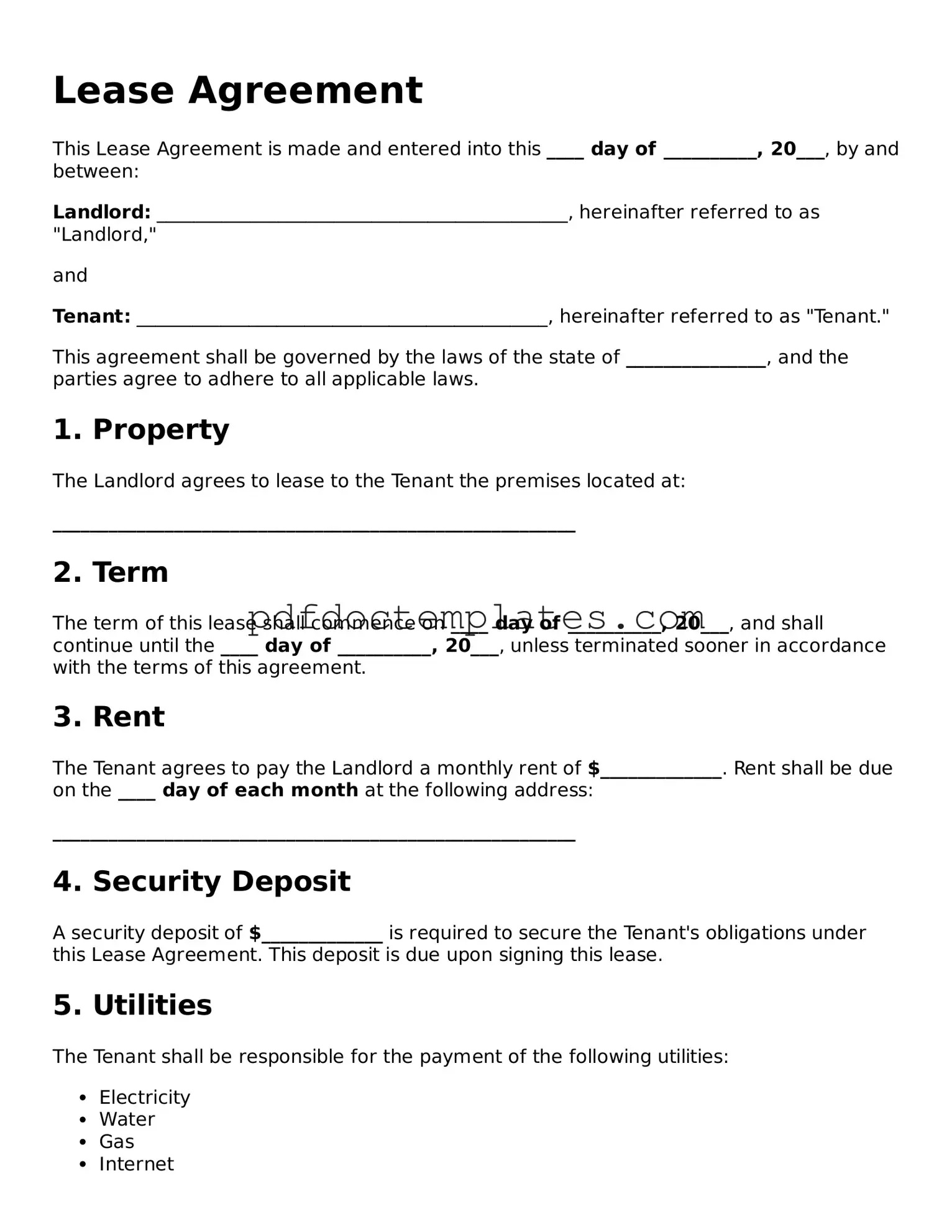Lease Agreement
This Lease Agreement is made and entered into this ____ day of __________, 20___, by and between:
Landlord: ____________________________________________, hereinafter referred to as "Landlord,"
and
Tenant: ____________________________________________, hereinafter referred to as "Tenant."
This agreement shall be governed by the laws of the state of _______________, and the parties agree to adhere to all applicable laws.
1. Property
The Landlord agrees to lease to the Tenant the premises located at:
________________________________________________________
2. Term
The term of this lease shall commence on ____ day of __________, 20___, and shall continue until the ____ day of __________, 20___, unless terminated sooner in accordance with the terms of this agreement.
3. Rent
The Tenant agrees to pay the Landlord a monthly rent of $_____________. Rent shall be due on the ____ day of each month at the following address:
________________________________________________________
4. Security Deposit
A security deposit of $_____________ is required to secure the Tenant's obligations under this Lease Agreement. This deposit is due upon signing this lease.
5. Utilities
The Tenant shall be responsible for the payment of the following utilities:
- Electricity
- Water
- Gas
- Internet
6. Maintenance and Repairs
The Tenant agrees to maintain the property in good condition and report any necessary repairs to the Landlord promptly.
7. Termination
Either party may terminate this agreement with a written notice of 30 days. Terminations must be delivered in person or sent via certified mail.
8. Signatures
By signing below, both parties agree to the terms outlined in this Lease Agreement.
Landlord Signature: _______________________________
Date: ________________
Tenant Signature: ________________________________
Date: ________________
